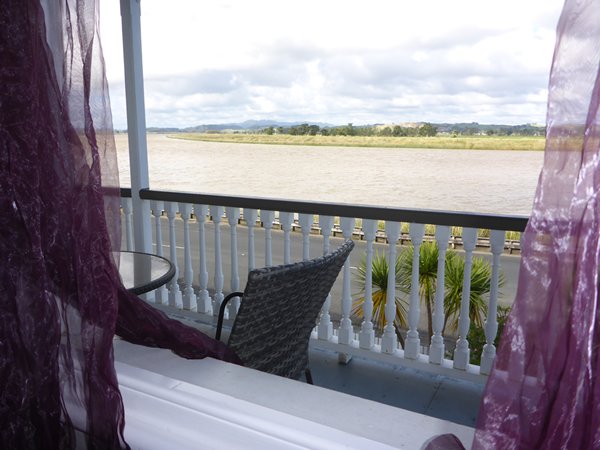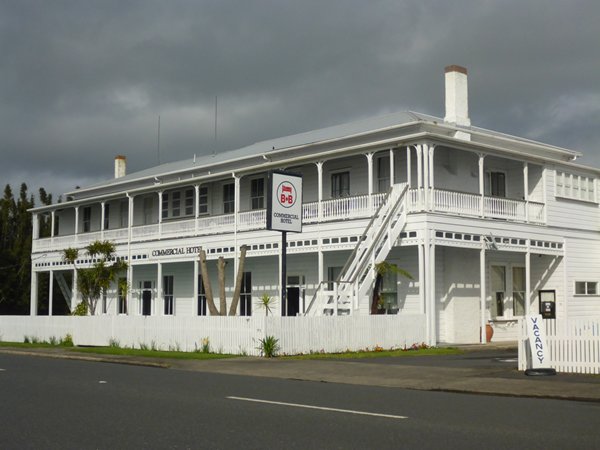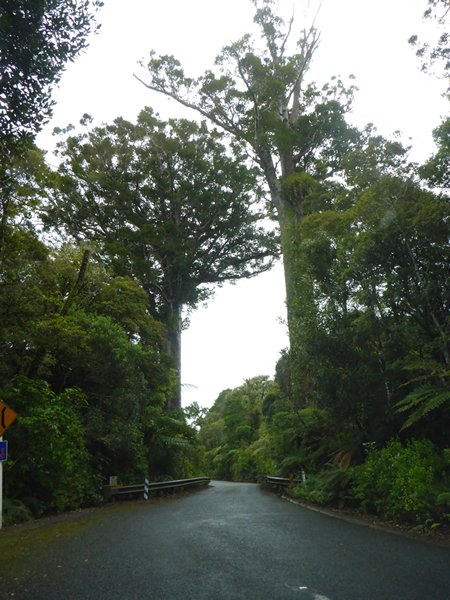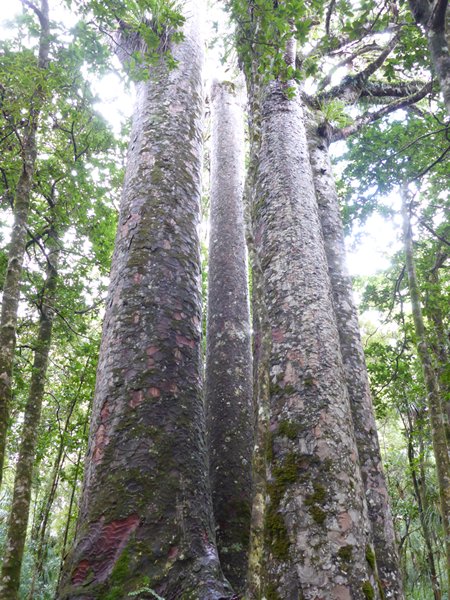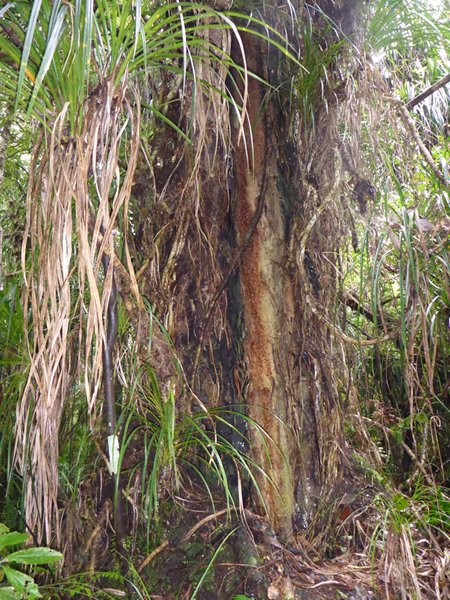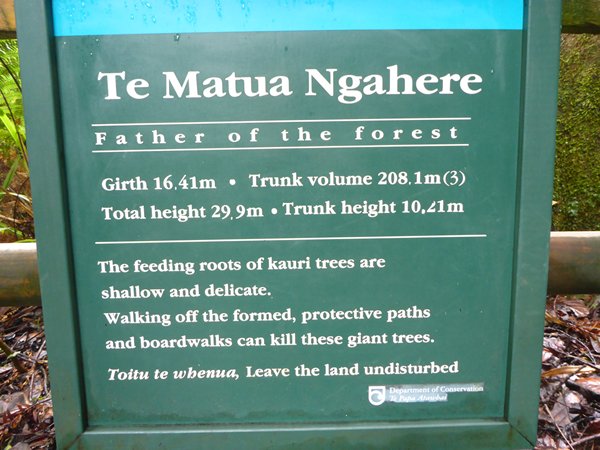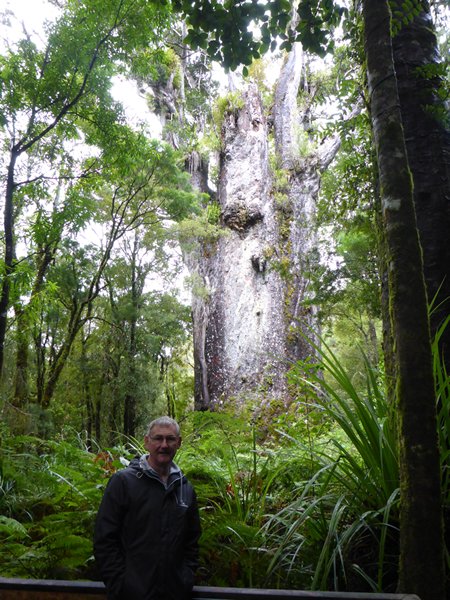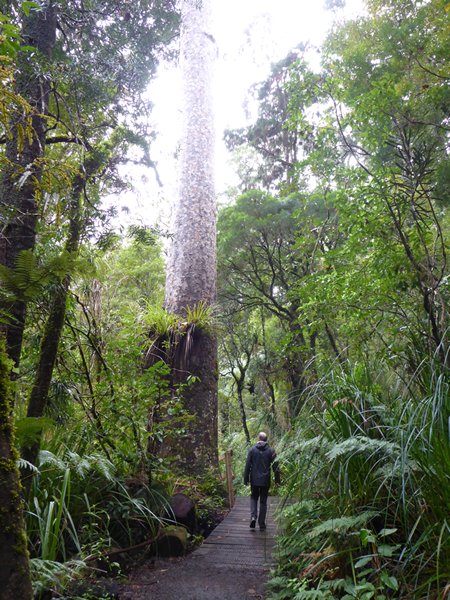Among Giants

|
Post-Colonial Dargaville. Anne’s husband is in Auckland, still indecisive about whether to give up his specialist diesel engineer career for the challenge of a veteran hotel on the west side of the north island. He has visited of course and left behind a ripped apart main bar in urgent need of restoration to prepare it for the new season, the first for Anne in her ambitious project. The previous owners of The Commercial Hotel have spent much time and money re-decorating in fresh light paint, sadly at the expense of most of the beautiful honey coloured kauri wood. The beautiful floors are a tantalising window on how the rest of the wood might have looked before the paint brush loomed. Remembering the years I ran my B & B I had many hints I could give Anne, a teacher of great diversity in a previous life, but ‘no’ I thought, let her have the fun and satisfaction of working it out for herself like I did. One thing I really did hope, and would have asked had we embarked on the next level of getting to know eachother, was did she look at the ‘books’ of the previous owner to see what kind of return she might expect and to act as a starting point for her advertising efforts. We stood on the front veranda of her 1880’s dream come true and Anne pointed to the wooden jetty that still steps out into the water. “It’s rotten now and I’m not quite sure who owns it, I think it might be me. Passenger ships from Sydney used to stop there regularly and the passengers would stay here for the night before moving on to Auckland. Now with the advent of the motor car and air travel the lost visitors travel straight through or fly over Dargaville taking the breath away from local businesses. The town struggles on after the boom of the logging years and the loss of visitors, but there is hope. The mass exodus of city dwellers in Auckland out to the nearby towns to exploit the rising prices and upsize their lifestyles and homes, or just escape the high prices of city life has brought some folk back to Dargaville. They now occupy the homes they had previously rented out, causing problems for their tenants and a homelessness the town has not seen before. Also the west coast 10 km from here and only two and a half hours from Auckland, is becoming more popular for holidays and watersports suggesting the constant flow of people may bring fresh life to the town. I hope so for Anne’s sake. You may have guessed we were the only visitors. We carried our bags down the tall ceilinged corridor to our room, overlooking the Wairoa River towards dairy flats on the other shore and the Tangihua Forest far away. The room needed airing so we opened one of the sash windows and wheeled the little portable radiator into the bedroom, turned it on and didn’t turn it off until we left the next morning. The balcony stretches right along the front of the building but to access it we needed to walk to the little door at the far end of the corridor. It was nice to look out of the window and imagine sitting at out little table with a drink on a warm summer’s evening. During the night tiny pinpricks of light showed where the farmsteads lay across the river. Rain hammered on the crinkly tin roof and a street light shed a golden colour on the wet road, which was empty until just before dawn. A Day with Giants. We were quite excited about visiting the Waipoua Forest and comparing the famous kauri trees with the many we have already seen, but first we detoured again towards the coast to see the Maori beloved Kai Iwi Lakes. Deserted at the moment these safe, clean rainwater fed lakes are a popular holiday destination in the summer. We explored a closed club building where the banner promoting a pentathlon last February was the only evidence of human activity. They are beautiful gems and credit to the Maori managers for keeping them clean when so many other wild waterways are now spoiled. The Lord of The Forest, Tane Mahuta, and the Father of The Forest, Te Matua Ngahere are not the only impressive neck cricking trees, the Four Sisters raise the question, How can four Kauris grow high and healthy so close to eachother? I wondered if the only limiting factor to their height was the power of their inbuilt pump to get the water upwards. In fact the ‘wow’ factor was more in the girth and trunk height of the Lord and Father than in the overall height. Spot Rob standing at the bottom of the picture arms outstretched, see what I mean? Walking carefully back along the wet and slippery boardwalk we thoroughly cleaned our walking shoes once more with the hope that we were contributing to the survival of these greats, now under threat of Kauri die back disease. With their delicate roots and susceptibility to disease these beautiful creatures have an almost animal quality. There is hope they will not die out. Other trees with similar diseases are responding to having their roots vaccinated and numerous nurseries are nurturing thousands of brand new kauri seedlings. Just a short distance further north along the State Highway 12 the road wanders round to the east and enters the lovely Hokianga Harbour at Omapere. Another mile and we were in the ISite between Omapere and Opononi having a lively chat with another globe-trotting granny, Yvonne. |

